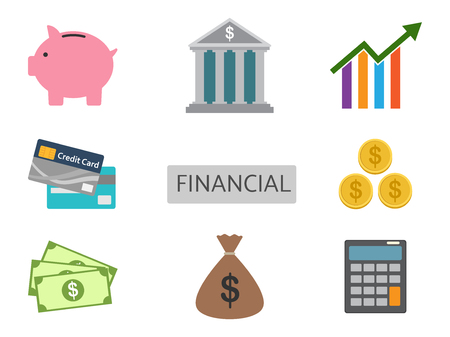1. Understanding the Importance of an Emergency Fund
Building an emergency fund is one of the smartest moves you can make for your financial well-being, especially in the United States where unexpected expenses can pop up at any time. An emergency fund acts as a safety net to help you cover unplanned costs without having to rely on credit cards or high-interest loans.
Why Is an Emergency Fund Essential?
Life is full of surprises, and not all of them are pleasant. In America, many households face financial stress due to sudden events like job loss, medical emergencies, car repairs, or urgent home fixes. Without savings set aside, these situations can quickly turn into bigger problems, leading to debt or even bankruptcy.
Common Financial Emergencies in the U.S.
| Emergency Type | Example Situations | Potential Cost Range |
|---|---|---|
| Medical Bills | Unexpected illness or injury, ER visits | $500 – $10,000+ |
| Job Loss | Losing employment or reduced hours | Several months living expenses |
| Car Repairs | Major breakdowns or accidents | $300 – $5,000+ |
| Home Repairs | Busted water heater, roof leaks | $200 – $8,000+ |
| Family Emergencies | Travel for funerals or family crises | $400 – $2,000+ |
The Reality for Many Americans
According to recent surveys, nearly 40% of Americans would struggle to cover a $400 emergency without borrowing money. This shows how vital it is to have a dedicated savings cushion. By automating your savings with direct deposit, you can steadily build up your emergency fund without even thinking about it. This simple step can help you avoid stress and keep your finances stable when life throws you a curveball.
2. What Is Direct Deposit and How Does It Work?
Direct deposit is a popular payroll feature in the United States that allows employers to electronically transfer your paycheck straight into your bank account. Instead of receiving a paper check on payday, your wages are automatically deposited, making it one of the most convenient and secure ways to get paid.
How Direct Deposit Works
When you start a new job or want to set up direct deposit, you typically provide your employer with your bank’s routing number and your personal account number. After everything is set up, your employer sends your paycheck information to their bank, which then communicates with your bank to move the money directly into your account. This usually happens automatically on each payday, so you don’t have to worry about visiting the bank or waiting for checks to clear.
Main Benefits of Direct Deposit
| Benefit | Description |
|---|---|
| Convenience | No need to visit a bank or ATM to deposit checks. Your money is available immediately on payday. |
| Security | Reduces risk of lost or stolen paper checks. Funds are transferred electronically and safely. |
| Speed | You can access your funds faster compared to waiting for check clearance. |
| Reliability | Your pay arrives on time, even if youre out of town or unable to pick up a physical check. |
| Widespread Use | Most American employers offer direct deposit as a standard payroll option due to its efficiency. |
Why Americans Prefer Direct Deposit for Savings Goals
Because direct deposit is so widely adopted across the U.S., its become a trusted way for people to manage their finances and automate savings. Many Americans take advantage of this feature by splitting their paycheck between checking and savings accounts—making it easy to grow an emergency fund without even thinking about it. This automation helps build financial security effortlessly, supporting both short-term needs and long-term goals.

3. Automating Savings: Setting Up Direct Deposit to Your Emergency Fund
Building an emergency fund can feel overwhelming, but automating your savings is one of the easiest ways to stay on track. By setting up direct deposit, you make saving a priority—without having to think about it every payday. Here’s a simple step-by-step guide for allocating part of your paycheck directly into a dedicated emergency fund savings account:
Step 1: Open a Separate Savings Account
If you don’t already have one, open a savings account at your bank or credit union specifically for your emergency fund. Keeping this money separate from your everyday spending makes it less tempting to use.
Step 2: Decide How Much to Save Each Paycheck
Figure out a realistic amount or percentage of your take-home pay that you can comfortably set aside. Even $25 or $50 per paycheck adds up over time.
| Pay Frequency | Suggested Amount Per Paycheck |
|---|---|
| Weekly | $10 – $25 |
| Biweekly (every two weeks) | $25 – $50 |
| Monthly | $50 – $100 |
Step 3: Update Your Direct Deposit Information
Contact your employer’s HR department or log in to your payroll portal online. Most employers allow you to split your direct deposit between multiple accounts. Provide them with your emergency fund savings account number and routing number, and specify the amount or percentage you want deposited each pay period.
Example:
- Main checking account (for bills): 85% of paycheck
- Emergency savings account: 15% of paycheck
Step 4: Monitor and Adjust as Needed
Once it’s set up, your chosen amount will automatically go into your emergency fund every payday. Check in on your progress every few months and increase the amount if you get a raise or find extra wiggle room in your budget.
Benefits of Automating Your Emergency Fund Savings:
- Makes saving effortless—no need to remember each month
- Keeps funds out of sight, reducing temptation to spend
- Builds financial security over time without stress
With just a few steps, you can put your emergency fund growth on autopilot and enjoy greater peace of mind knowing youre prepared for lifes unexpected expenses.
4. Benefits of Automation: Building Consistent Savings Habits
Setting up direct deposit for your emergency fund is one of the smartest moves you can make when it comes to saving money. Automating your savings doesn’t just take the guesswork out of building an emergency fund—it also helps you grow your balance without even thinking about it. Let’s break down why automating your savings through direct deposit is so effective, both psychologically and financially.
Psychological Benefits of Automated Savings
Automated savings taps into a simple truth: what you don’t see, you’re less likely to spend. When a set amount of your paycheck goes straight into your savings account, it never touches your checking account. This “out of sight, out of mind” strategy makes it easier to avoid the temptation to spend money impulsively. Over time, this builds a positive habit without requiring willpower every payday.
| Psychological Benefit | How It Helps |
|---|---|
| Reduces Temptation | Money is moved before you see it, making spending less likely |
| Lowers Stress | No more worrying about forgetting to save each month |
| Builds Confidence | Watching your emergency fund grow gives peace of mind |
Financial Benefits of Direct Deposit Savings
On the financial side, automation ensures that you’re consistently setting aside money—rain or shine. You don’t have to remember to transfer funds or debate how much to save each month. This consistency is key for growing an emergency fund that can actually support you in tough times. Plus, banks may offer higher interest rates or perks for accounts with regular automatic deposits.
| Financial Benefit | Why It Matters |
|---|---|
| Consistency | Savings happen every pay period, no missed months |
| Faster Fund Growth | Regular deposits add up quickly over time |
| Potential Account Perks | Banks may offer bonuses for automated deposits |
The Bottom Line: Easy Wins for Your Emergency Fund
By automating your savings with direct deposit, you’re setting yourself up for success both mentally and financially. The process removes barriers and helps make saving money effortless, so your emergency fund grows steadily while you focus on living life.
5. Tips for Optimizing Your Automated Emergency Fund
Choose the Right High-Yield Savings Account
Not all savings accounts are created equal, especially when it comes to building your emergency fund. For Americans looking to maximize their savings, it’s smart to compare high-yield savings accounts offered by online banks and credit unions. Look for accounts with no monthly fees, easy online access, and strong FDIC or NCUA insurance protection. Here’s a simple comparison:
| Account Type | Average APY | Monthly Fees | FDIC/NCUA Insured? |
|---|---|---|---|
| Traditional Bank Savings | 0.01% – 0.10% | Often Yes | Yes |
| Online High-Yield Savings | 4.00% – 5.00% | No | Yes |
| Credit Union Savings | 0.50% – 2.00% | No/Low | Yes (NCUA) |
Review and Adjust Your Contribution Amounts Regularly
Your financial situation can change over time—maybe you get a raise, pay off debt, or take on new expenses. Make it a habit to review how much you’re automatically depositing into your emergency fund at least once a year or after any major life event. If you started with $25 per paycheck, but now have more room in your budget, consider bumping up your deposit to $50 or $100.
Increase Deposits as Your Income Grows
A good rule of thumb is to increase your automated savings whenever your income goes up. For example, if you receive a 3% raise, try increasing your direct deposit to your emergency fund by the same percentage. This way, you won’t feel the pinch and your fund will grow faster.
Sample Plan for Boosting Contributions Over Time:
| Year | Monthly Deposit | Total Saved (End of Year) | Action Step |
|---|---|---|---|
| 1 | $50 | $600+ | Start with what’s comfortable |
| 2 (after raise) | $60 | $720+ | Bump up by $10/month after raise |
| 3 (bonus year) | $70 + bonus deposit | $840+bonus interest | Add a portion of annual bonus or tax refund to savings automatically |
Set Up Separate Accounts for Clarity and Motivation
If possible, keep your emergency fund in a separate account from your regular spending money. This makes it easier to track progress and reduces the temptation to dip into the funds for non-emergencies.
Quick Checklist for Optimizing Your Automated Emergency Fund:
- Select a high-yield savings account with no monthly fees.
- Automate direct deposits from every paycheck.
- Revisit and adjust deposit amounts yearly or after raises.
- Add windfalls like bonuses or tax refunds automatically.
- Aim for at least three to six months’ worth of living expenses as your target balance.
The key is consistency—automate what you can, make adjustments as your finances change, and let compound interest help grow your safety net over time.

